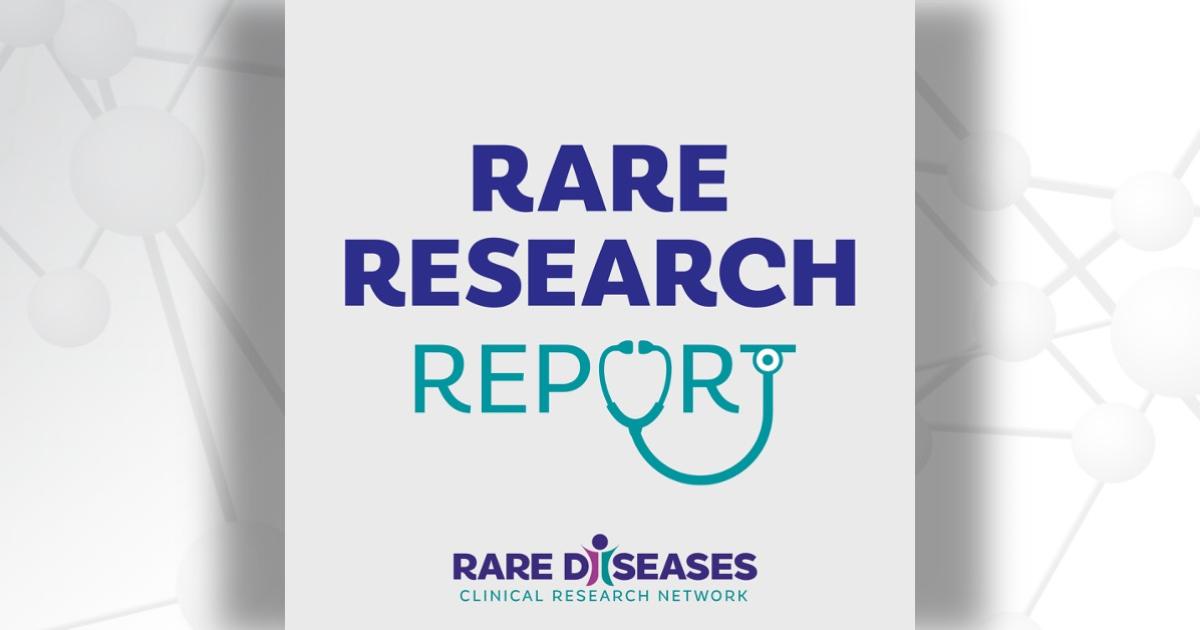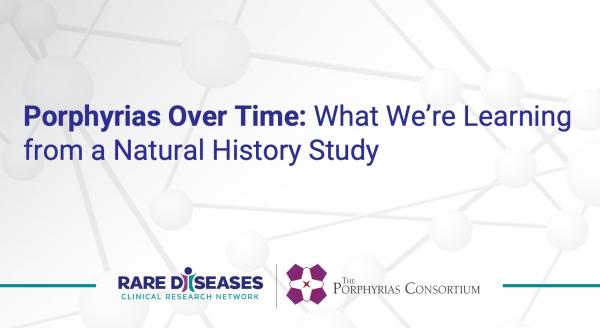Each month, we share summaries of recent Rare Diseases Clinical Research Network (RDCRN) grant-funded publications. Catch up on the latest RDCRN research below.
Jump to:
- Brittle Bone Disorders Consortium (BBDC)
- Developmental Synaptopathies Consortium (DSC)
- Inherited Neuropathy Consortium (INC)
- Phenylalanine Families and Researchers Exploring Evidence (PHEFREE) Consortium
Listen to these summaries on the Rare Research Report podcast.
Brittle Bone Disorders Consortium (BBDC)
Exploring Bone Age Maturation During Adolescent Growth in Patients with Osteogenesis Imperfecta
Osteogenesis imperfecta (OI) is a group of inherited connective tissue disorders associated with a wide range of symptoms, including fragile bones that break easily. In typically developing children, radiographic images can reveal predictable patterns of changes in the size, shape, and mineralization of the hand and wrist bones. Known as the bone age, this metric can be used to assess time remaining for growth as well as the onset and duration of puberty, helping to determine the timing of surgeries or reveal deviations in a child’s growth pattern.
In this study, researchers explored bone age maturation during adolescent growth in patients with OI. The team compared radiographs of the hand and wrist in 159 children with OI ages 8 to 17 with healthy controls. Bone ages were repeated around two years later and analyzed by both an endocrinologist and automated program called BoneXpert.
Results showed that in children with mild-to-moderate OI (types I and IV), skeletal maturation is comparable to healthy controls. For those with more severe forms of OI (type III), results showed a delayed pattern of skeletal maturation of less than a year at baseline and a delayed rate of maturation over the two-year follow-up. However, authors note that these differences may not be clinically significant, concluding that bone age can be used in the OI population in a way that is similar to the general pediatric population.
Nicol LE, Baines H, Koike S, Liu W; Members of the Brittle Bone Disorders Consortium; Orwoll E. Cross-sectional and longitudinal analysis of bone age maturation during peri-pubertal growth in children with type I, III and IV osteogenesis imperfecta. Bone. 2024 Oct;187:117192. doi: 10.1016/j.bone.2024.117192. Epub 2024 Jul 4. PMID: 38969279; PMCID: PMC11324408.
Developmental Synaptopathies Consortium (DSC)
Examining the Morphological Features of Cortical Language Regions in Individuals with Tuberous Sclerosis Complex
Tuberous sclerosis complex (TSC) is a genetic condition in which typically benign tumors affect multiple organs including the brain, kidneys, heart, lungs, eyes, and skin. Many individuals with TSC also experience delay in several aspects of development, including language.
In this structural brain MRI study, researchers examined the morphological features of cortical language regions in individuals with TSC. Participants included seven individuals with TSC and comorbid autism spectrum disorder (ASD), 13 with TSC but no ASD, 10 with ASD-only, and 29 typically developing controls.
Results suggest that comorbid ASD in TSC as well as tuber load in TSC is associated with changes in the morphometry of language regions. Authors note that future studies with larger sample sizes are needed to confirm these findings.
Ahtam B, Yun HJ, Vyas R, Pienaar R, Wilson JH, Goswami CP, Berto LF, Warfield SK, Sahin M, Grant PE, Peters JM, Im K. Morphological Features of Language Regions in Individuals with Tuberous Sclerosis Complex. J Autism Dev Disord. 2024 Aug;54(8):3155-3175. doi: 10.1007/s10803-023-06004-8. Epub 2023 May 24. Erratum in: J Autism Dev Disord. 2024 Mar;54(3):1232. doi: 10.1007/s10803-023-06098-0. PMID: 37222965.
Inherited Neuropathy Consortium (INC)
Expanding the Phenotype of Peroxisome Biogenesis Disorders by Uncovering a New Genetic Variant
Peroxisome biogenesis disorders (PBDs), also known as Zellweger spectrum, are a group of genetic conditions that affect many parts of the body. PBDs are characterized by failure of the body to produce properly functioning peroxisomes, which are membrane-bound organelles involved in a variety of metabolic reactions. These disorders are usually caused by variants in peroxin (PEX) genes.
In this report, researchers expand the phenotype of peroxisome biogenesis disorders by uncovering a new genetic variant. The team performed whole exome sequencing in two patients presenting with late-onset PBD, including movement disorders noticed at age 34 and 41, respectively.
Results revealed a new PEX11B variant in these patients. Symptoms included dystonia, ataxia, and tremor, which had not been previously described in PBDs. Authors note that movement disorders may only manifest at a later age in patients with PBD.
Henning F, Naidu K, Record CJ, Dominik N, Vandrovcova J, Lubbe F, Dercksen M; ICGNMD Consortium; Wilson LA, Van Der Westhuizen F, Reilly MM, Houlden H, Hanna MG, Carr J. Extended Phenotype of PEX11B Pathogenic Variants: Ataxia, Tremor, and Dystonia Due to a Novel C.2T > G Variant. Mov Disord Clin Pract. 2024 Aug 2. doi: 10.1002/mdc3.14178. Epub ahead of print. PMID: 39092477.
Phenylalanine Families and Researchers Exploring Evidence (PHEFREE) Consortium
Reporting Initial Data from a Natural History Study of Individuals with Phenylketonuria
Phenylalanine hydroxylase (PAH) deficiency, also known as phenylketonuria (PKU), is a genetic metabolic disorder that increases the body's levels of the amino acid phenylalanine. The last large-scale natural history study of individuals with PKU in the United States was conducted over 50 years ago. Since then, there have been significant changes in treatment recommendations and options.
In this study, researchers report initial data from the PHEFREE natural history study of individuals with PKU. The team describes the structure and methods of the study, including data from 73 participants.
Authors note that this study could help validate new neurocognitive tools for assessing individuals with PKU, as well as evaluating the long-term effects of changes in metabolic control on patient outcomes.
Christ SE, Arnold G, Lichter-Konecki U, Berry GT, Grange DK, Harding CO, Jurecki E, Levy H, Longo N, Morotti H, Sacharow S, Thomas J, White DA. Initial results from the PHEFREE longitudinal natural history study: Cross-sectional observations in a cohort of individuals with phenylalanine hydroxylase (PAH) deficiency. Mol Genet Metab. 2024 Jul 22;143(1-2):108541. doi: 10.1016/j.ymgme.2024.108541. Epub ahead of print. PMID: 39059270.
The Rare Diseases Clinical Research Network (RDCRN) is funded by the National Institutes of Health (NIH) and led by the National Center for Advancing Translational Sciences (NCATS) through its Division of Rare Diseases Research Innovation (DRDRI). Now in its fourth five-year funding cycle, RDCRN is a partnership with funding and programmatic support provided by Institutes, Centers, and Offices across NIH, including the National Institute of Neurological Disorders and Stroke, the National Institute of Allergy and Infectious Diseases, the National Institute of Diabetes and Digestive and Kidney Diseases, the Eunice Kennedy Shriver National Institute of Child Health and Human Development, the National Institute of Arthritis and Musculoskeletal and Skin Diseases, the National Heart, Lung, and Blood Institute, the National Institute of Dental and Craniofacial Research, the National Institute of Mental Health, and the Office of Dietary Supplements.






